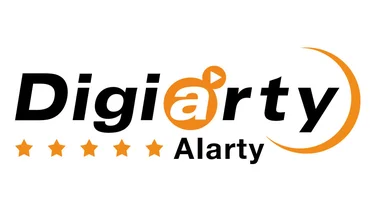To help us provide you with free impartial advice, we may earn a commission if you buy through links on our site. Learn more



Shooting in raw mode can make a startling difference to the quality of your photos – as long as you have suitable software to process them. The bundled applications that come with cameras are fine for the odd shot, but for everyday use, it’s worth investing in something more capable. Adobe Photoshop Lightroom 4 is our current favourite, but there’s still plenty of competition out there – including this new contender from Corel.

Rather than design a raw-processing and photo-management program from scratch, Corel has bought and rebranded Bibble Pro, a less well-known application but one that commands a loyal following. It’s easy to see why. Whereas most rival packages are split into various discrete modules, AfterShot Pro – as it’s now known – presents everything on one screen. The tabbed panels are coherently arranged, with the left side devoted to management – filtering by metadata, browsing by folder and export – while the right panel handles editing functions.
Filtering by metadata is elegant and quick. The filters include keywords, ratings, labels, file type, date, camera and lens model, plus camera settings – from aperture to white balance preset. There’s a number in brackets beside each filter value, so we were immediately able to see that we had 10,248 shots at ISO 100 and four at ISO 140, for example. Holding down Shift selects a range of values, such as March to July. Clicking the Refine button locks the selection for further filtering by other metadata. It all happens extremely quickly, revealing matches for multiple filters in under a second from our catalogue of 40,000 images.

Raw processing and JPEG manipulation is entirely non-destructive, and on the whole, it’s hard to fault. The Standard tab brings the most commonly used tools together, with greater control provided via tabs for Color, Tone and Detail. It’s also possible to perform adjustments to a limited area, as defined by a brush, curve, polygon or circle tool, or any combination.
Automatic lens correction is built in, with profiles for an impressive number of lenses. It’s not applied by default, which is a bit of a pain for Micro Four Thirds cameras’ raw files which tend to need the correction, but it isn’t hard to define default settings that apply correction to batches of photos with a single click. Lens profiles don’t fix chromatic aberrations, though, whereas Adobe Lightroom’s profiles do.
There are a few other areas with room for improvement. It’s possible to pick a narrow range of colours for manipulation, but pixels are either manipulated or not – there’s no feathering by location or colour. This often gave the affected area a harsh, noisy border. Meanwhile, noise reduction is in three parts, with the more powerful processing provided by a third-party plug-in, and overall it can’t quite match Lightroom’s noise reduction quality. Corel needs to rethink its approach here, as the current system feels disjointed.

Another concern is its less-than-fully comprehensive support for raw formats. There’s always a small delay for these applications to support a new camera, but AfterShot Pro is yet to support the Panasonic FZ150, Nikon P7100, Sony NEX-C3 and Pentax Q, all of which were launched between June and August 2011. The entire Samsung NX range and anything by Fujifilm and Sigma are currently off limits, too.
Corel needs to address this urgently. Users should be free to choose whatever camera they like, both now and in the future. Once you’ve invested hundreds of hours tagging photos and performing non-destructive edits, the last thing you’ll want is to be forced to switch to different software when you buy a new camera.
However, AfterShot Pro also feels more specialised than its competitors. It doesn’t have multimedia capabilities such as video support, geo-tagging and integration with online hosting services. We anticipate that this will change under Corel’s stewardship, but in a way, the streamlined design is part of its charm. We hope that Corel can expand it without compromising its efficiency.
As it stands, AfterShotPro compares well with Adobe Photoshop Lightroom 4, beating it for catalogue management and local edits and coming close for colour correction. Noise reduction is a little disappointing, though, not so much in the quality of the results but more in its convoluted implementation. Meanwhile, the less-than-comprehensive raw format support doesn’t inspire confidence. As such, we’re reluctant to recommend it unreservedly, but a minor update could bring it to the top of the pack.
| Details | |
|---|---|
| Price | £74 |
| Details | www.corel.co.uk |
| Rating | **** |





